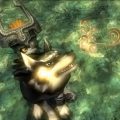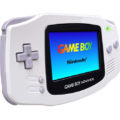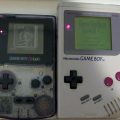Gamecube Retrospective — Geoff’s Picks

It’s possible to make a respectable list of the most underappreciated video game systems in history thus far, and the Nintendo Gamecube would be near the top of that list. The console was viewed as a good alternative during its generation that was mainly good for Nintendo games, but little else. Its software lineup didn’t compare to the PlayStation 2, though that comparison is a little unfair given how Sony’s system had one of the best lineups for a console in history. But Gamecube also had that reputation when compared to Xbox, despite the latter (scroll down to the bottom) only selling slightly better than the former (see page 2) worldwide, and only having slightly better third-party support. Xbox had a more gamer-centric audience and was taken more seriously by some, despite Nintendo-published games always being worth respect.
The reputation was also a shame given how inexpensive Gamecube was compared to the competition, specifically how it launched at a low $199 price — incredibly hard to fathom for a console these days. Nintendo anticipated their need to try a little harder to compete with Sony and Microsoft, but it was barely enough for them to stay in the console game.
The Gamecube received a healthy helping of both first and third-party games that are well worth remembering, even if several of them have been ported to succeeding platforms by now. I didn’t have any problems choosing five; it’s easier to pick Nintendo titles to feature in a lineup of favorite software for the platform, but titles from other publishers were memorable enough to make my list too.

1. Super Mario Sunshine: I wasn’t the biggest fan of Super Mario Sunshine when I first played it, thanks to my misadjusted expectations. I loved the hell out of Super Mario 64, and playing it was one of my best memories from my early teenage years. So, I was disappointed that Nintendo went in a different direction instead of making a direct successor to that one.
But as I played more of it, I started to enjoy its unique mechanics, which involved using F.L.U.D.D. to clean up Gleato Beach, fighting enemies, jumping obstacles. For anyone who was initially disappointed like me, the game contains special levels where Mario is deprived of F.L.U.D.D., where the jumping mechanics and platforms are reminiscent of SM 64. It’s constantly ranked low on the list of 3D Mario games, but that still makes it one of the best 3D platformers around overall.

2. The Legend of Zelda: The Wind Waker: It’s easy to remember the fierce backlash to The Legend of Zelda: The Wind Waker’s art style after its reveal like it was yesterday, thanks to the game going for a different art style than fans expected. (You might notice a slight trend here.) Instead of having a more realistic style like the Gamecube tech demo shown at Spaceworld, the presentation was heavily cel shaded — toon shaded.
It looked questionable in screenshots, but was a sight to behold in motion — and still is to this day. The visual style was attached to a game that utilized the Zelda formula for a fun adventure, where Link could sail to locations in a world mostly covered with water. This game has aged better than more-realistic successor Twilight Princess, thanks to its visuals and mostly improved pacing. It’s since been remastered for Wii U, which ironically toned down the cel shading; but the original still looks good.

3. Metroid Prime: What do you know? Metroid Prime was another Gamecube game that surprised fans with its approach, thanks to its first-person view. It wasn’t a full-on Quake clone like many feared it would be after its reveal (that was Metroid Prime Hunters), but utilized the first-person view for a unique perspective on what a Metroid game could resemble.
Outside the perspective and the unique-but-great take on combat, the game presented a good nonlinear sci-fi adventure featuring Samus travelling around the planet in the universe, but did a much better job putting players in her suit thanks to the view. The platforming worked well in first-person, and the addition of scanning helped to make this feel like a rewarding quest on par with the older 2D games. Prime received a sequel on the same system and another one on Wii, but this one has the best balance between exploration and difficulty.

4. Resident Evil 4: Resident Evil 4 has been ported to every system under the sun, but it’s always worth remembering that it first released on Gamecube, and was originally intended to be an exclusive under the Capcom 5.
I’ve written at length about RE4 (including through a review), but I’ll never stop mentioning how good it is, and that it’s necessary homework for anyone who wants to study what good pacing is in an action game. It never lets up on the action, yet also never feels overwhelming thanks to the number of calmer and atmospheric moments scattered about. Sure, the shooting mechanics feel out of date these days with the enhancements made to its progeny, but it’s still perfectly tolerable thanks to the game being well designed around them. Ashley also doesn’t get too annoying, despite making a good portion of the game a long escort mission.
The Gamecube may not be the best place to play it these days, but it’s still an enjoyable game that will probably never be topped in the franchise.

5. Tales of Symphonia: Tales of Symphonia wasn’t the first game in the franchise to release in western territories. But it was the first one to garner a good audience thanks to how unique its gameplay was compared to other RPGs at the time. Sure, I thought the cast and plot contrivances were incredibly generic for Japanese RPGs even at the time, but it was a lot of fun, especially for someone who skipped Tales of Destiny and Eternia on PSOne for a variety of reasons.
There weren’t many RPGs with actionized battle systems like this at the time it released in 2004, and RPG options on Gamecube were always small, and this one made for a good buy. It also helped that it was briskly paced, and that its story was fun despite being predictable. There’s a good reason why this game is almost single-handedly responsible for establishing the Tales franchise in western territories, and Namco had the good foresight to release it in the summer, a dry period for video game releases.
Time hasn’t been that kind to it, but I had a lot of fun with it during my time home in the summer of 2004. It easily made this list thanks to my memories associated with it, along with the other games above.
Gamecube should have received more attention during its time on the market, but it’s nice that the good software lineup can be celebrated now — including through retrospectives like this one, along with Angela’s and Drew’s. Keep crossing your fingers for Gamecube Virtual Console releases one day, and maybe a Gamecube Classic Edition when technology allows for it.





